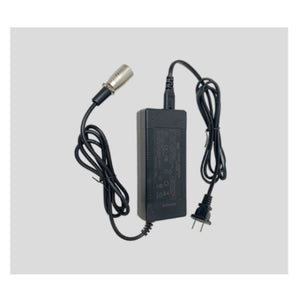Having a dead power wheelchair battery can give your loved ones who depend on these incredible machines to go around a moment of panic.
Do you still have any chance for your dead battery? Yes! There is, and you can complete it independently at home.
In this article, we'll explain why wheelchair batteries discharge, how to recharge them, and a few techniques you can use to prolong the shelf life.
The most frequent reason for a depleted wheelchair battery is leaving the scooter or power chair idle without an external charging source connected for a prolonged period.

To prevent overheating, the batteries in motorized wheelchairs and scooters must always be charged between 10 and 11 volts.
Because the charger won't even connect and attempt to charge the batteries when the voltage falls below 10 or 11, problems may arise.
When that occurs, you have two options:
- Option 1:Make an effort to revive the dying battery.
- Option 2: Get a fresh battery.
So, let's start with the first and most convenient option.
Recharging an Electric Wheelchair Battery Step by Step:
- Get a 12-volt charger from a nearby retailer.
- Disconnect the charger's wires.
- Attach the severed wires to the wheelchair's current battery metal internals.
- A power outlet should be connected to the charger.
- Charge the battery following the directions provided by the maker.
- Disconnect the battery and the charger from the outlet.
- Keep the charger in a secure location.
On the other hand, if you want to charge a mobility scooter without a charger
Follow six simple steps:
- Take the Battery Out
- Remove the screws and bolts
- Remove the positive and negative wires
- Connect the portable car jump starter
- Turn the vehicle jump starter on.
- Unplug the car jumper cables
Your wheelchair scooter is now fully charged and ready to go!
Even after this, Wheelchair Quantum is not charging Lookup for these:
- Ensure the battery is depleted using a voltmeter or another technique.
- If the battery is dead, it should be charged for the necessary time with a reliable, known battery charger, left to sit for a few hours, and then tested by using it or using an appropriate testing technique.
- All electric wheelchairs and mobility scooters come with a specific battery charger that should be used whenever possible, albeit occasionally, these break down and need to be replaced.
- Different charging techniques may be used temporarily, but only temporarily, because battery charging raises safety issues.
- If recharging the battery doesn't work, the battery may need to be replaced, or the wheelchair may have a problem.
What impacts the battery life:
You might need to replace the battery as frequently as every six months if you use your wheelchair frequently and travel long distances with it.
Lithium-ion is the most recent battery technology, and wheelchair users are adopting these as their preferred option.
Although they cost more than lead-acid batteries, they require less maintenance and last longer.
Ascertain the battery's functionality:
The following advice will help you test a wheelchair battery:
- The voltage ought to range from 12 to 24 volts.
- Verify that the connections are corrosion-free and spotless.
- Use a load tester to test the battery.
- If the battery is over three years old, replacing it is a good idea.
- Have a qualified technician examine and service the battery for the best results.
Maintaining Your Power Chair Battery:
You can take a few steps to ensure your battery lasts as long as possible.
- Make sure you routinely charge your battery.
- Try to keep your battery from dying completely.
- Store your batteries in a dry, cool environment.
- Watch for symptoms of wear and tear on your battery.
- Charge a little. The lithium battery cell's interior is likewise made up of various parts. The component's function may deteriorate if we utilize it for an extended period. The safety risk of overcharging will, therefore, exist.
Overcharging a lithium battery in an electric wheelchair will eventually harm it.
If you use a wheelchair, keeping the batteries correctly ensures the longest possible battery life.
Final Verdict:
Since the first motorized wheelchairs were introduced to the market in the 1950s, a lot has changed.
Several solutions are available today to meet various demands and lifestyles. Even while technology has advanced significantly, one thing has stayed the same.
Eventually, every wheelchair battery will need to be recharged.
FAQs:
What is a Pulse charger?
Pulse chargers (also known as desolator chargers) eliminate the lead sulfate crystals and sulfate layers that accumulate on the battery electrodes and ultimately cause the battery to die.
How long does it take for wheelchair batteries to charge?
Electric wheelchairs often run on lithium-ion batteries. Lithium-ion batteries normally take 6 to 8 hours to charge completely.
How often should I charge the battery in my wheelchair?
If you regularly use an electric wheelchair, you should charge the batteries every night for 8 to 15 hours. Consider charging the batteries twice weekly if you don't use your wheelchair regularly.
Why Won't My Wheelchair Battery Hold A Charge?
Check the battery itself first. It might be time to replace it if it's over a few years old.
Next, examine the charger. Make sure it is plugged in and functioning correctly. Try charging the battery for a longer amount of time if it is.






